THEY WERE tree-huggers in the woods, facing one another, locked in an awkward embrace around a maple, all the while engaged in copulation — even as I wandered by and started taking pictures.
The male was old and faded, the female tattered but still flashing her fancy underparts. They neither stirred nor minded my prying.
They were Rosy Maple Moths having sex.
It might be easy for me now to go on about moth reproduction. After all, my critics say I write a lot about sex in nature, that it’s my literary crutch (a charge to which I plead mostly guilty). But this dispatch isn’t really about moth sex (well, okay, maybe a little). It is instead about a drama, the art of noticing, and refuge.
Act 1: The Setting and the Sex
My pup Odin and I might have easily stepped on these moths before first noticing the male’s worn, pale-yellow left forewing. “WTF is that?” I said to Odin, who was more interested in Red Squirrels at the time. I leaned over for a closer look. (I only wish that this image above was from farther away so that you might see how inconspicuous these moths actually were in the bigger woods.)
There’s more than meets in the eye here. Oh, sure, we’re drawn to the pair. After all, rarely do we notice and get so close to animals in copulation. Insect oblige more than most, more so butterflies than moths, which generally mate in the dark and sometimes linger in copulation into the daylight (but nonetheless rarely discovered by the likes of us).
As it turns out, there’s a reason this pair was visible at this spot, which I’ll get to in a bit. Clinging to their deer-browsed Sugar Maple (Acer saccharum) shoot, the pair was customarily “joined at the tip” — the tips of their abdomens. The male’s yellow abdomen shows under the tent of his wings; and you can see the female’s hot pink undersides. Here’s a better look below.
Act 2: The Pause and the Awareness
Normally, Rosy Maple Moths (Dryocampa rubicunda) would be doing it up in the tree canopy, where the females go on to lay eggs on maple leaves (on which her caterpillars will eat and grow). So what were they doing down here on the forest floor? I wouldn’t know until later that day.
Only after taking a zillion iPhone shots of the pair, did I finally pause to breathe, to look away from the screen, and again to see their world. Only then did I notice the lemon-yellow eggs on the leaf of a Canada Mayflower (Maianthemum canadense). Her eggs? Did she lay them there before this copulation? Did she drop them like little bombs? Or might they have been laid by some other insect?
Another pause. That’s when I noticed the larva. Frosted white with zig-zag margins, it’s on another Canada Mayflower leaf left of the eggs in the photo. Not a caterpillar. Maybe a firefly larva? A few more iPhone shots, after which Odie and I continued on our morning walk.
Act 3: The Return and the Discovery
Those eggs, the larva, and the mating moths would not leave my brain that day. Too many mysteries. So Odin and I returned that afternoon (with better camera gear) to the scene in the woods. The male Rosy Maple Moth was gone. The eggs and larva remained. I found the female moth nearby on the underside of another Canada Mayflower leaf.
As it turned out, she could not fly. Her wings had been damaged, perhaps during her emerging (eclosion) from her cocoon. But the male had found her nonetheless, probably lured by her wafting of pheromones into the night air. It’s why the pair wasn’t mating in the tree-tops, but beside a trail instead, where I happened to notice them. One mystery solved.
I brought the flightless female home, made her comfortable, and set her on some Sugar Maple leaves for the night. Sure enough, by morning she had dutifully laid a dozen or so eggs — a match. It was confirmation that the eggs in the woods were indeed hers (perhaps laid before she “hooked up” with the male), and probably on the Canada Mayflower leaf because she had nowhere else to go. Second mystery solved. (Once those eggs hatch here at home, I’ll put the caterpillars on maple leaves back in the woods.)
As for the larva, that mystery continues. It appears to be one of the flower flies, also known as hover flies, many of which are bee mimics, in the family Syrphidae. I had brought it home as well, where I am now awaiting its transformation to a pupa and then an adult, which will be more easily identified to species. It will be the denouement to this drama.
Epilogue
On that particular morning walk, I might have compiled a lengthy bird list; that night I might have seen a hundred moth species at my lights. But nature isn’t only about finding more or even about the virtues of diversity. Sometimes it’s about the solitary or the few.
The moths and the eggs and the larvae, on only two plants, became for me a grand journey. On a big planet spinning much too fast, overloaded with information and distraction, nature reminds me of the opportunity to step away from the maelstrom of the glowing screens, the tyranny of the inbox. Sometimes that’s tough for me. But the destination need not be a rainforest or a coral reef or even your local preserve. Refuge lies ahead with but a trace of curiosity brought to a cubic foot of forest.
And if that’s not your thing, well, there’s always the cheap thrills of moth sex.
Postscript
Rosy Maple Moth is in the family Saturniidae, featuring some of the world’s most charismatic insects, including the giant silkmoths. They include Luna (Actias luna) and Cecropia (Hyalophora cecropia) moths here in North America, and, in Europe, Small Emperor Moth (Saturnia pavonia). Here’s a smattering of them courtesy of the amazing iNaturalist.
Thanks, as always, to the amazing Jason Dombroskie for general invert wisdom.

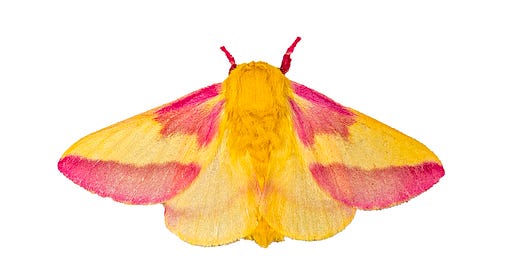


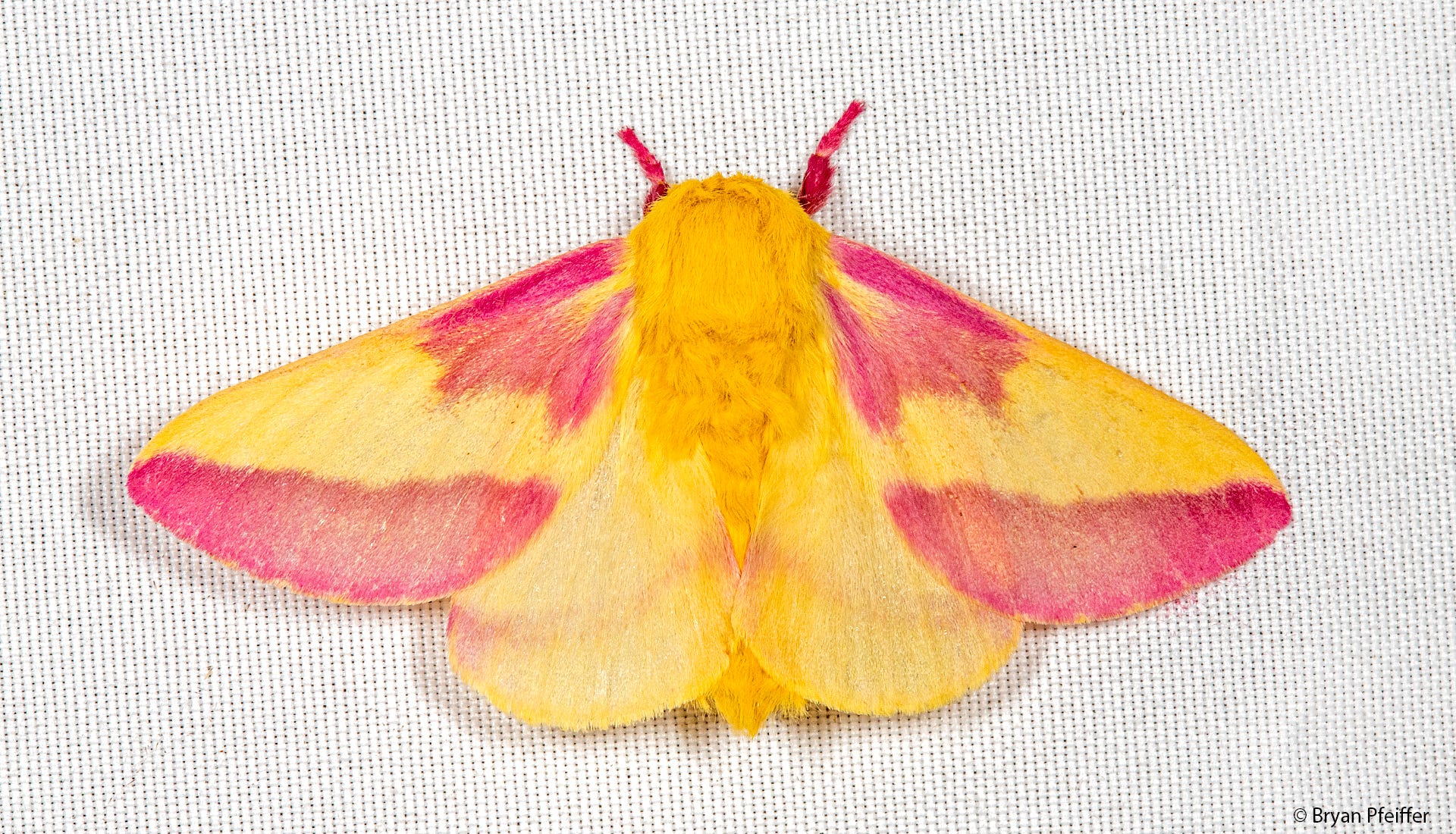
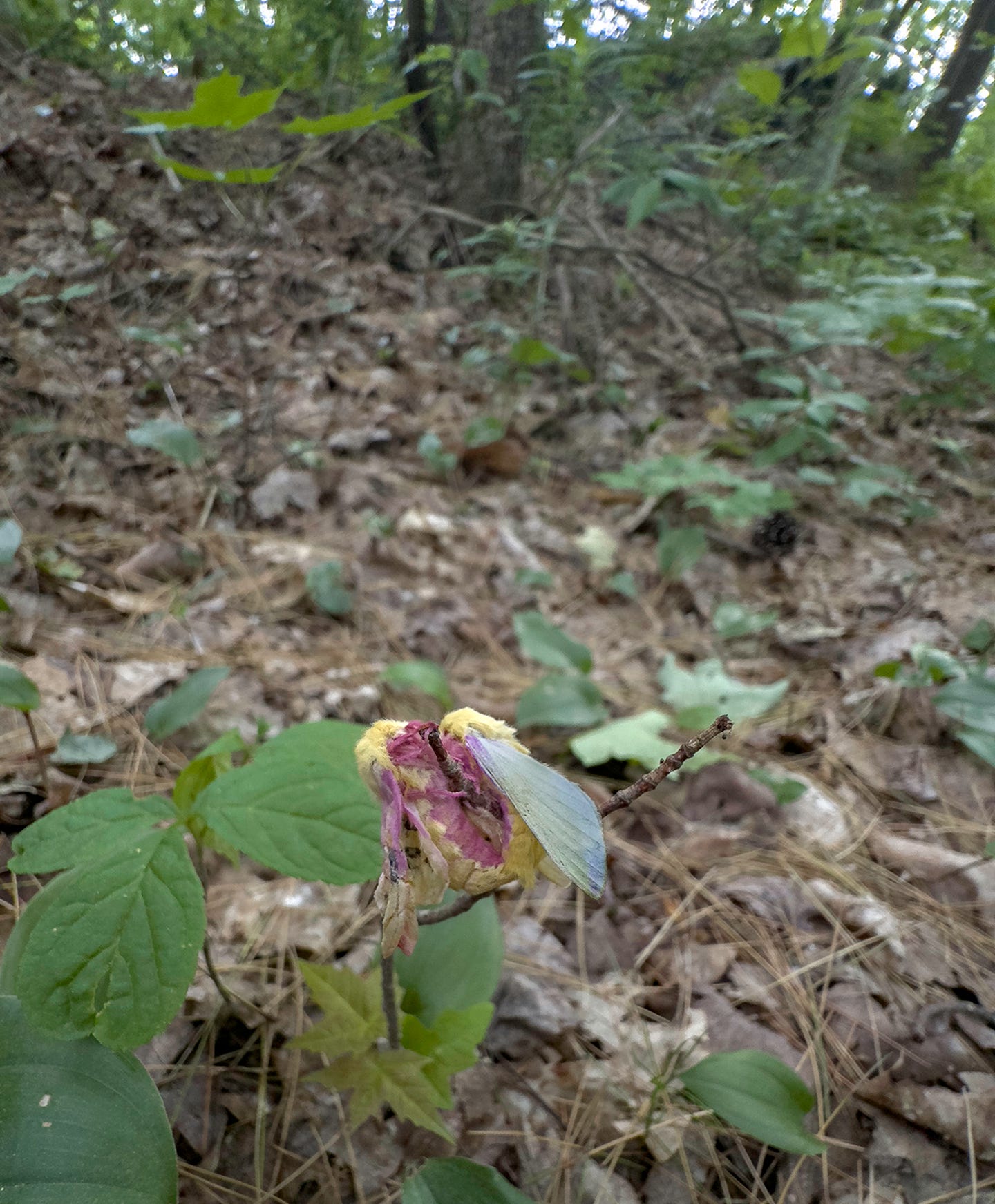
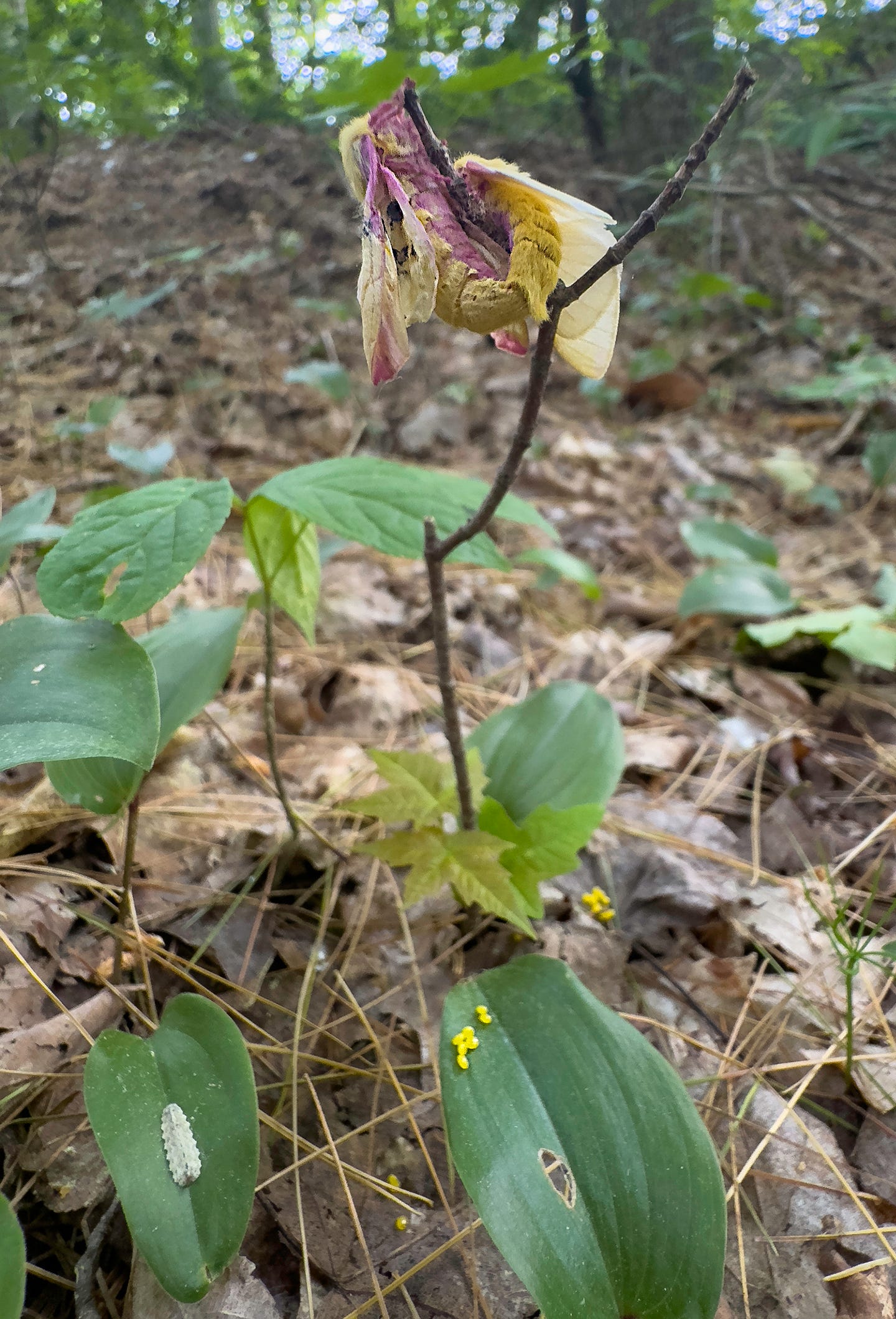
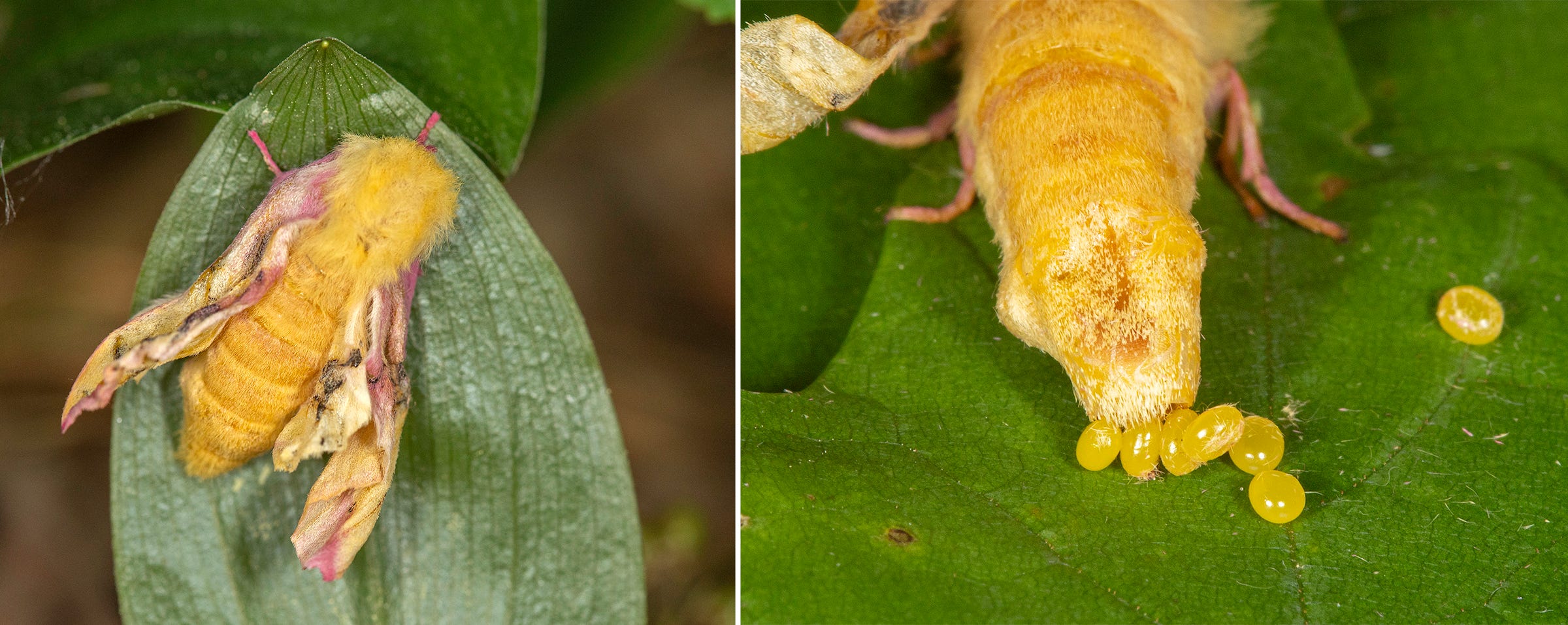


Of all the creatures to happen upon this lovely, injured, yet-still-trying moth, it was you — perhaps the only one in the world who would notice, know, and care enough to help her fulfill her biological instinct. Thank you for telling this beautiful story.
As Mary Oliver admonishes us to fall down on the grass and pay attention. You, my kindred dog lover and nature looker.